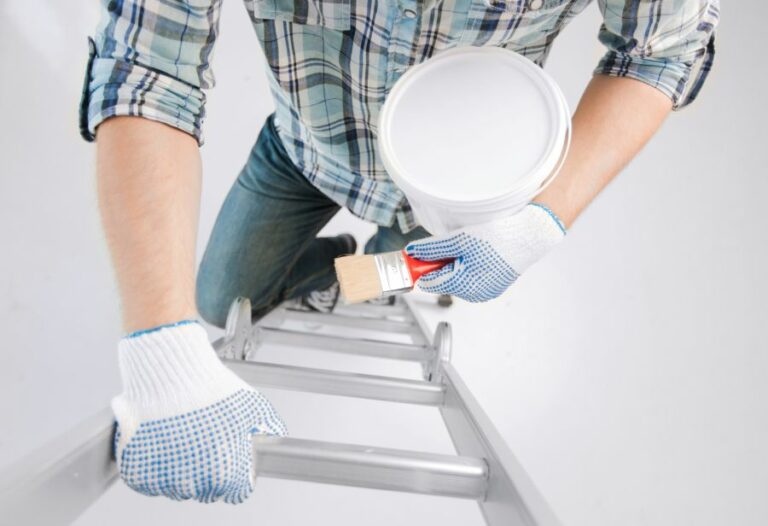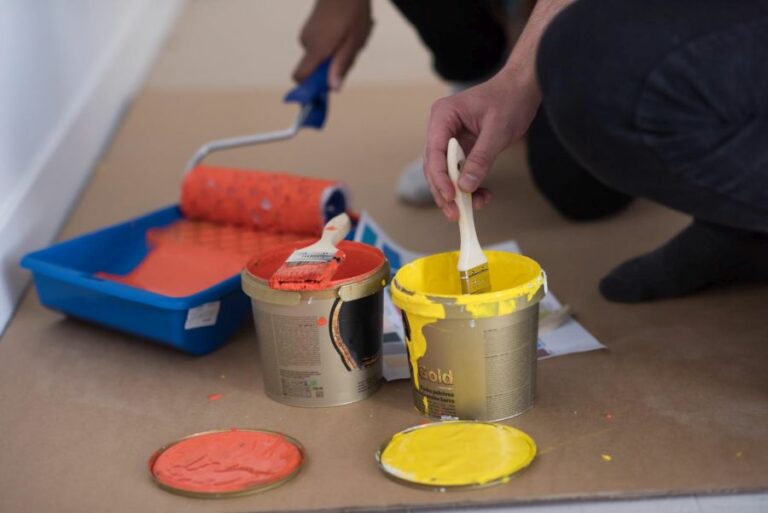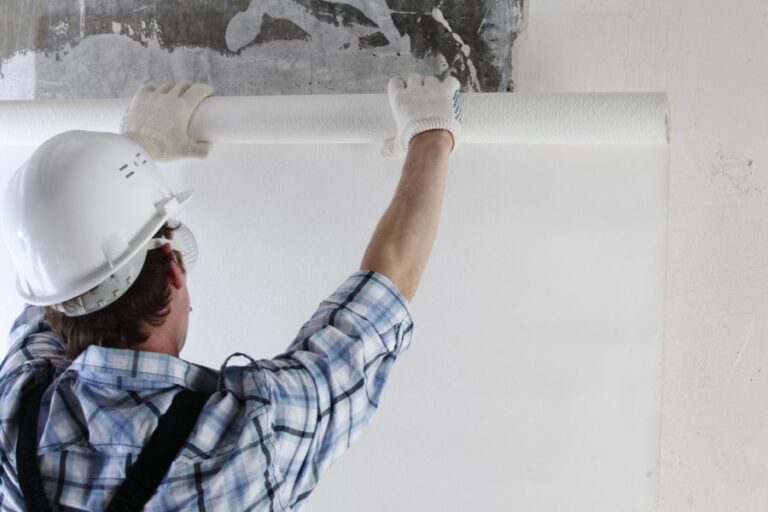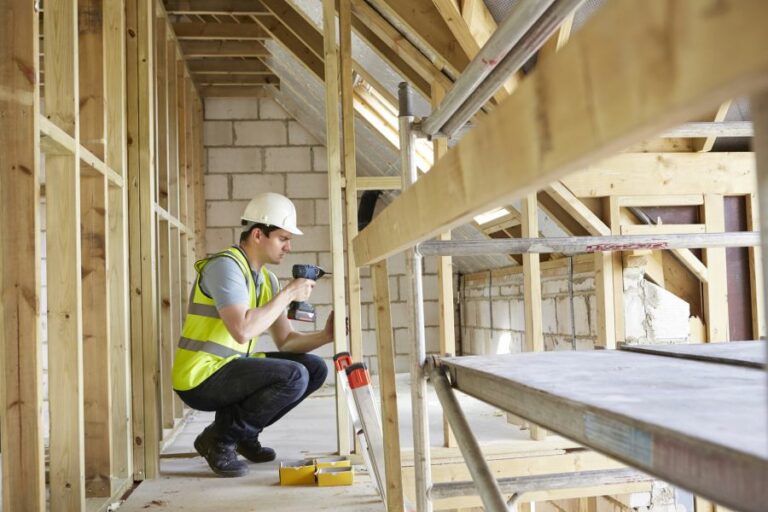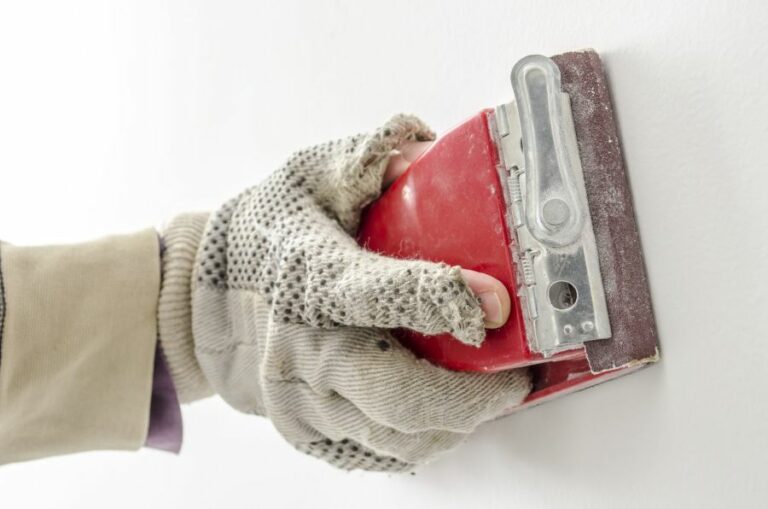How Surface Profiling Improves Paint Bonding. What Pros Say
Paint bonding is a critical aspect of any coating application process, as it directly affects the final product’s durability, appearance, and overall performance. As experts in surface profiling, we can confidently provide you with the knowledge and solutions needed to optimize paint bonding and achieve long-lasting, high-quality results.
How surface profiling improves paint bonding:
Surface profiling improves paint bonding by analyzing and modifying a surface’s roughness, texture, and waviness, ensuring proper paint or coatings adhesion. By achieving appropriate surface cleanliness, roughness, and profile, the paint bonding quality is significantly improved, resulting in enhanced performance, durability, and longevity of the paint or coating.

Want to know the secret behind long-lasting paint jobs? Unlock the power of surface profiling to improve paint bonding for exceptional results that stand the test of time! Read on to explore valuable insights and expert techniques that will take your paint game to the next level.
Contents
- 1 Enhancing Paint Bonding through Surface Profiling
- 2 Boosting Paint Adhesion: Tips and Techniques
- 3 Coating Adhesion Improvement: Key Components
- 4 Surface Roughness Impact on Coating Adhesion Strength
- 5 Understanding Surface Profile in Paint Application
- 6 Methods for Paint Adhesion Enhancement on Substrate Surfaces
- 7 Exploring the Importance of Surface Profiling in Painting
Enhancing Paint Bonding through Surface Profiling
• Introduction to Surface Profiling
Surface profiling is a vital aspect of preparing surfaces for painting and coatings. It refers to the process of analyzing and modifying the roughness, texture, and waviness of a surface to ensure proper adhesion of paint or other coatings.
Surface profile directly affects the overall performance, durability, and longevity of the applied paint or coating, as the paint bonding quality largely depends on the profile of the surface being coated.
• The Importance of Surface Cleanliness and Profile in Paint Bonding
A primary factor in achieving a strong bond between the surface and paint is surface cleanliness. The presence of contaminants such as grease, dirt, and rust can prevent the proper adhesion of paint, leading to unsightly defects and premature paint failure.
In addition to cleanliness, the surface profile also plays a crucial role in improving paint bonding. The surface roughness ensures mechanical interlocking between the surface and the paint, enhancing adhesion performance.
An inadequate or inappropriate surface profile for the specific paint or coating may lead to uneven paint distribution, poor inter-coat adhesion, and paint failure.
• Types of Surface Profiling Techniques
There are numerous techniques of surface profiling, which typically fall into two categories: mechanical and chemical. The choice of the most suitable method depends on the specific surface material, type of coating, and desired profile level.
– Mechanical Surface Profiling Methods
- Abrasive Blasting: This method involves the use of high-pressure air or water to propel abrasive particles onto the surface, creating a rough profile. Examples of abrasive materials include steel shot, glass beads, and crushed walnut shells. Abrasive blasting is an efficient and widely used method for surface profiling of metals and concrete.
- Grinding: Grinding involves using abrasive tools, such as grinding wheels or diamond discs, to remove material from the surface and create the desired profile. It is a common method for profiling metal, masonry, and concrete surfaces.
- Needle Scaling: This method involves the use of a needle scaler, a pneumatic tool that utilizes multiple, thin steel needles to chip away at the surface material and create a rough profile. This is particularly useful when removing rust and mill scale from metal surfaces.
– Chemical Surface Profiling Methods
- Acid Etching: Acid etching involves the application of an acidic solution to the surface, which reacts with the material and creates a uniform, rough texture. Commonly used acids include phosphoric, hydrochloric, and sulfuric acid. This method is commonly used for surface profiling of concrete.
- Chemical Conversion Coatings: This method involves applying a chemical solution that reacts with the surface material, forming a conversion coating that improves adhesion and provides corrosion resistance. An example of such a coating is the chromate conversion coating widely used on aluminum surfaces for improved paint adhesion.
• Expert Recommendations for Optimal Surface Profiling
To achieve the best possible paint bonding, consider the following expert recommendations:
- Understanding the paint or coating manufacturer’s requirements for surface profile, as it may differ depending on the specific coating type and its intended application.
- Properly selecting the most appropriate surface profiling method for your particular project, taking into account the material type, level of contaminants, and desired profile level.
- Regularly inspecting the surface before, during, and after profiling, ensuring that the required cleanliness and profile levels are achieved.
- Always wear appropriate safety gear (such as goggles, gloves, and respiratory protection) when performing surface profiling operations, as certain methods may generate dust and other hazardous particles.
- Properly disposing of any waste material produced during the profiling process in accordance with local regulations and guidelines.
• Conclusion: The Benefits of Surface Profiling for Paint Bonding
In conclusion, surface profiling is a critical aspect of achieving successful paint bonding. By ensuring the appropriate surface roughness, texture, and cleanliness, paint adhesion is significantly improved, leading to more durable, long-lasting, and aesthetically pleasing coatings.
Achieving the best possible paint bonding through proper surface profiling not only improves the overall performance and longevity of the paint or coating but also protects the underlying surface from potential damage and corrosion.
Boosting Paint Adhesion: Tips and Techniques
• Understanding Paint Adhesion
Paint adhesion is the ability of a paint layer to effectively bond with the surface it’s applied to. When paint fails to adhere properly, the result can be peeling, blistering, or flaking of the paint.
This not only looks unsightly but can also diminish the durability and protection of the painted surface. Improving paint adhesion is crucial for achieving a flawless, long-lasting finish.
To better understand how to improve paint adhesion, it’s important to know the factors that affect paint bonding. These include surface preparation, type of paint used, application methods, and environmental conditions.
• The Importance of Surface Preparation
One of the best methods to improve paint adhesion is through proper surface preparation. Inadequate preparation is a primary reason for paint failure, so you should devote substantial time and effort to this step.
– Surface Cleaning
Before applying paint, make sure the surface is clean and free from dust, dirt, grease, and other contaminants. This can be done using a mild detergent and water solution or specialized cleaning agents, depending on the surface type and the type of contaminants present.
If you’re working with metal surfaces, using a solvent like mineral spirits can help remove stubborn materials like grease and oil.
– Surface Sanding
Sanding can greatly improve the adhesion of paint to the surface. It not only removes old paint, stains, or varnish but also creates a rougher texture, which helps the fresh paint bond better.
When sanding, use sandpaper with appropriate grit for different surfaces and applications: coarse grits (40-60) for heavy-duty jobs like paint removal, medium grits (80-120) for smoothing surfaces, and fine grits (150-180) for finish sanding.
– Deglossing
Existing glossy painted surfaces can reduce paint adhesion. To enhance bonding, use a liquid deglosser or primer with deglossing capabilities to dull and provide better adhesion with the new paint.
– Repairing Surface Imperfections
Inspect surfaces for flaws like cracks, holes, or dents, and repair them with appropriate filler materials. The smoother and more even the surface, the better the paint adhesion.
• Choosing the Right Paint
Using the correct type of paint can go a long way in improving adhesion. Some general tips to choose the right paint include:
- Opt for acrylic latex paint over oil-based paint: Acrylic latex paint, in comparison to oil-based paint, offers better adhesion, flexibility, and resistance to UV damage. It also dries faster and has lower VOC emissions.
- Always use a primer: A primer is a preparatory coating applied before the paint, which helps to create a consistent, uniform-colored surface and enhances adhesion. Opt for a primer that is compatible with the paint and the surface being painted. For example, a metal surface would require a metal primer, while a wood surface might require a wood primer.
- When painting difficult surfaces, use a bonding primer: Bonding primers are formulated to provide excellent adhesion to challenging surfaces like plastic, metal, glass, or glossy surfaces. Their application will help improve the adhesion of the subsequent paint layers.
• Proper Application Techniques
Following the right application methods is equally crucial for achieving strong paint adhesion. Some tips to help ensure proper paint application include:
- Avoid applying paint on excessively hot or cold days: Excessive heat can cause paint to dry faster, preventing proper substrate penetration, while extreme cold can slow down the drying time, leading to adhesion problems. It’s best to paint on mild, dry days, with temperatures ranging between 50ºF-85ºF.
- Follow manufacturer’s directions: Always read and follow the manufacturer’s instructions and recommendations on the paint can for optimal application, coverage, drying time, and other important aspects.
- Apply the correct number of coats: Adequate film thickness ensures proper adhesion. Applying too few coats can result in poor paint performance, while excessive coats can lead to peeling. Make sure to abide by the manufacturer’s recommendations regarding the number of coats required.
- Use the right tools: Quality brushes, rollers, or spray equipment can help in even and consistent paint application, which contributes to better adhesion. For smooth surfaces, use a short-nap roller cover, and for more textured surfaces, opt for a medium or long-nap roller.
• Conclusion
Improving paint adhesion significantly relies on appropriate surface preparation, choosing the right paint and primer, and following proper application techniques. By incorporating these tips, you can achieve a durable, appealing, and long-lasting paint finish.
Step | Description |
|---|---|
1 | Clean the surface thoroughly to remove any dirt, dust, and grease. |
2 | Lightly sand the surface to create some roughness, which will help the paint adhere better. |
3 | Apply a suitable primer on the surface to enhance paint adhesion. |
4 | Choose the right type of paint for the material/surface you’re working on. |
5 | Apply the paint in thin, even coats and allow each coat to dry properly before applying the next. |
Coating Adhesion Improvement: Key Components
Coating adhesion is a crucial property in determining the effectiveness and durability of the thin film applied to various surfaces like metal, plastic, or even wood in some instances. Poor adhesion can lead to undesirable effects such as peeling, flaking, or cracking, compromising the intended function of the applied coating.
Therefore, it is essential to utilize various methods and techniques to improve the adhesion of coatings effectively.
• Surface Preparation Methods to Improve Coating Adhesion
– Cleaning and Degreasing
To ensure proper adhesion, surfaces must first be cleaned and degreased thoroughly. Contaminants like oil, grease, or dirt can interfere with the coating’s ability to bond, which can cause poor adhesion. There are various cleaning methods that can be utilized, such as:
- Solvent cleaning: Using solvents like acetone or MEK to remove contaminants.
- Alkaline cleaning: Employing water-based cleaning solutions that break down grease and oil.
- Ultrasonic cleaning: A process in which high-frequency sound waves are used to clean surfaces effectively.
– Surface Roughening
One of the most effective ways to improve coating adhesion is by roughening the surface to be coated. It can create a mechanical interlocking, which increases the contact area and bonding strength between the coating and the substrate. There are several ways to achieve this surface roughening:
- Sanding or blasting: Involves the use of sandpaper or media like glass beads, aluminum oxide, or steel grit blasted at high pressure to increase surface roughness.
- Acid etching: A chemical process that utilizes acids to dissolve part of the substrate’s surface, creating a textured profile.
- Laser texturing: A method that uses laser technology to create microscopic roughness on the surface.
– Surface Activation
Activating the surface chemically can also improve the bond strength between a substrate and the applied coating. These chemical treatments can modify surface energy and create functional groups which can bond with the coating. Various surface activation methods can be employed, such as:
- Plasma treatment: Utilizes plasma (ionized gas) to modify the surface properties, increase surface energy and create reactive surface groups.
- Chromate conversion coatings: Involves the use of chromium-based chemicals to create a layer of chromate film that improves adhesion and provides additional corrosion resistance.
• Adhesion Promoters and Coupling Agents
In some cases, introducing an additional layer between the substrate and the coating using adhesion promoters or coupling agents can improve the bonding strength of the applied coating. These materials work by chemically bonding or bridging the applied coating with the substrate, forming a unified system.
– Silanes
One of the most commonly used coupling agents in the coating industry is silanes. They consist of functional groups that can chemically bond with both the surface (substrate) and the applied coating. They can improve adhesion and enhance the overall performance of protective coatings or adhesives.
– Organofunctional Titanates and Zirconates
Organofunctional titanates and zirconates are inorganic coupling agents used to improve the adhesion and flexibility of coatings. They work equally well on metallic, ceramic, or polymeric substrates.
Titanates can also enhance the wet-out and compatibility of pigments, giving improved color and surface appearance.
• Application Methods to Improve Coating Adhesion
– Proper Film Thickness
It is essential to ensure that proper film thickness is applied when coating a substrate, as too thin or too thick of a layer can negatively affect adhesion. Following the manufacturer’s recommendations for film thickness can help improve the bond strength between the substrate and the applied layer.
– Optimal Curing Conditions
Different coatings have specific curing requirements, such as temperature, humidity, and time. Properly following these requirements can help prevent issues such as poor adhesion, shrinking, or cracking of the coating. Always refer to the manufacturer’s guidelines for optimal curing conditions.
• Conclusion
Achieving optimal adhesion for applied coatings is a critical factor in ensuring their performance and durability.
By utilizing proper surface preparation techniques, incorporating adhesion promoters, and following best practices in application methods, it is possible to achieve a strong bond between the coating and the substrate.
Surface Roughness Impact on Coating Adhesion Strength
Surface roughness has a significant impact on coatings’ adhesion to substrates, whether it’s for paint, adhesive bonding, or protective coatings.
• Understanding Surface Roughness and its Importance
Surface roughness refers to the texture and irregularities on a material’s surface. It plays a vital role in the adhesion of coatings due to various factors, including mechanical interlocking, increased surface area, and improved wetting.
A rough surface facilitates better anchoring of the coating, enhancing the adhesion strength and the resistance to various environmental factors.
– Mechanical Interlocking
Mechanical interlocking results from the coating’s ability to flow into the valleys and peaks of the rough surface. This phenomenon helps the coating to grip the surface more effectively, ensuring optimal bonding between the coating and the substrate.
Increasing the surface roughness further enhances the mechanical interlocking, thereby improving the coating’s adhesion.
– Increased Surface Area
Rougher surfaces possess a larger surface area than smoother surfaces. Consequently, coatings can form more contact points with the uneven surface, leading to better adhesion. A larger surface area also enables the coating to have a better stress distribution, thereby improving its durability over time.
– Improved Wetting
Wetting refers to a coating’s ability to spread across a surface to form a uniform layer. It directly impacts the quality of adhesion. A rough surface provides more pathways for the coating to flow, ensuring that it evenly spreads across the entire surface.
This improved wetting ultimately results in better bonding between the coating and the substrate.
• Surface Preparation Techniques for Optimal Adhesion
Proper surface preparation is crucial for achieving high-quality coating adhesion. Various methods exist for increasing surface roughness, including abrasive blasting, acid etching, and mechanical abrasion.
Selecting the right technique depends on the substrate material, the coating type, and the desired adhesion performance.
– Abrasive Blasting
Abrasive blasting is a popular method used to increase surface roughness, particularly on metallic surfaces. This technique uses high-pressure air to project abrasive particles onto the surface.
Blasting not only removes contaminants and impurities but also introduces a uniform roughness pattern, essential for consistent coating adhesion.
– Acid Etching
Used primarily on concrete or masonry surfaces, acid etching is a surface preparation method that dissolves a thin layer of the surface matrix. The process reveals micro-roughness, providing an appropriate surface profile to ensure proper coating adhesion.
Acid etching requires diligent handling due to the corrosive nature of the chemicals involved.
– Mechanical Abrasion
Mechanical abrasion employs either manual or machine-based techniques, such as grinding, sanding, or brushing. This method is suitable for various materials, including metal, plastic, and wood surfaces. Mechanical abrasion ensures an adequately textured surface for coatings to grip, facilitating improved adhesion.
• Measuring Surface Roughness for Adequate Coating Adhesion
Accurate measurement of surface roughness is important to ensure sufficient coating adhesion. Multiple techniques exist to assess surface roughness, such as profilometry, interferometry, and confocal microscopy. The choice of the measurement method depends on the specific requirements, cost, and accuracy needed.
Engineers from the University of Southampton have explored the effects of surface roughness on adhesive bonding. Their research revealed that a clear relationship exists between increasing surface roughness and improved bond strength for specific material combinations.
• Expert Recommendations for Optimal Coating Adhesion
Based on industry experience, some general recommendations can improve the adhesion and durability of coatings.
- Ensure the substrate is clean and free from contaminants before applying the coating.
- Choose the appropriate surface preparation technique based on the substrate material and the coating type.
- Consider the long-term performance requirements of the coating to determine the optimal surface roughness.
- Measure and monitor surface roughness to ensure consistent and high-quality adhesion.
In conclusion, surface roughness has a significant effect on coating adhesion. By understanding its importance, employing suitable surface preparation techniques, accurately measuring surface roughness, and following expert recommendations, a high-quality and durable coating can be achieved.
Understanding Surface Profile in Paint Application
Surface profile refers to the texture and roughness of a surface that is to be painted. It is a crucial factor that can make or break the performance of a paint coating system, as it directly affects important paint properties such as adhesion, coverage, and protection against corrosion.
• Importance of Surface Profile in Painting
The surface profile of a substrate plays a vital role in ensuring the coating system’s effectiveness. An ideal surface profile has these benefits:
– Enhanced Adhesion
Paint coatings adhere better to a rough surface than to a smooth one. In fact, paint systems experience ideal adhesion when they penetrate deep into the valleys and cover the peaks of a surface profile. This increased adherence extends the lifespan of the coating system.
– Improved Coverage
A well-prepared surface profile ensures that the paint system creates a thick, uniform layer when applied. This increases the coating’s performance and durability.
– Maximized Corrosion Protection
A rough surface profile provides numerous anchor points for added corrosion inhibitors in coatings, such as zinc-rich primers.
This maximizes the coating’s potential to protect substrates from corrosion. For instance, in the case of steel surfaces, a high-quality profile is crucial to hinder potential future rusting events.
• Measurement of Surface Profile
To ensure optimal paint performance, measuring and monitoring the surface profile are necessary. The three most widely used methods are:
– Comparator
Surface profile comparators are simple mechanical devices made of metal or plastic that display a range of surface profile depths. They are placed against the substrate to visually compare and match the actual surface profile with the comparator’s profile range. This provides an approximation of the profile depth.
– Replica Tape
Replica tape is a two-sided tape consisting of a compressible foam on one side and a non-compressible, incompressible polyester layer on the other. The foam side is pressed against the substrate, creating a replica of the peaks and valleys of the surface profile.
The thickness of the compressed tape is then measured using a spring-loaded micrometer to determine the actual surface profile depth.
– Stylus Instrument
Electronic stylus instruments use a sharp stylus to move across the surface, tracking the peaks and valleys as it traverses. The obtained profile is then displayed digitally or graphically, providing accurate measurements for surface profile depth.
• Industry Standards and Guidelines
Various organizations have established standards and guidelines for surface profile measurements and acceptable ranges. Some prominent standards include:
- International Organization for Standardization (ISO) 8503: Detailed guidelines regarding measurements and classification of surface profile.
- NACE International: Provides numerous standards and guidelines for surface preparation, cleaning, and profile measurements.
- ASTM International (ASTM) D4417: Specifies the various methods for measuring surface profile depth and their procedures.
- Steel Structures Painting Council (SSPC) Surface Profile Guides: Offer guidelines on choosing appropriate surface profile depths for specific painting systems.
• Surface Preparation Techniques
Creating an optimal surface profile requires proper surface preparation. Some common techniques include:
– Abrasive Blasting
Abrasive blasting is a popular method for preparing metal surfaces, specifically steel. High-pressure air or water propels abrasive particles against the substrate, removing contaminants and creating the desired surface profile.
– Power Tool Cleaning
Power tools like grinders, sanders, and needle guns are used to remove rust, scale, and coatings from substrates. This method provides a fairly controlled surface profile, but it may be less efficient and more labor-intensive than abrasive blasting.
– Chemical Cleaning
Chemical solutions, such as acids and alkaline solutions, are used to strip coatings and contaminants from substrates. This method can be effective at removing surface contaminants but may not create sufficient surface roughness for ideal paint adhesion.
– Acid Etching
Acid etching is a treatment that dissolves the substrate’s surface layer, leaving a finely-etched profile appropriate for subsequent coatings. This method is typically used for preparing concrete surfaces.
• Recommendations for Optimal Surface Profile
Based on my experience, I recommend the following practices for achieving an ideal surface profile:
- Choose the most appropriate surface preparation technique for your specific application.
- Measure the surface profile using the method that provides the necessary accuracy for your paint system.
- Consult industry standards and guidelines to ensure your surface profile falls within acceptable ranges.
- Be diligent in your quality control efforts to ensure the longevity and performance of your paint system.
By understanding and managing the surface profile in painting, you can substantially enhance the performance and lifespan of your paint coatings, ultimately providing better protection and an appealing aesthetic for your substrate.
Methods for Paint Adhesion Enhancement on Substrate Surfaces
When it comes to painting projects, whether for residential, commercial, or industrial applications, achieving a durable, lasting finish is crucial. One of the key factors that contribute to the longevity and appearance of paint is how well it adheres to the substrate surface.
• Importance of Surface Preparation
Surface preparation is the first and most important step in any painting project. A clean, smooth, and properly prepared surface will significantly improve the adhesion of paint and increase the life of the paint job.
Surface preparation involves several key steps, including cleaning, repairing, and preparing the surface for the primer application.
– Cleaning the Substrate Surface
It is essential to remove dirt, dust, grease, and any loose or peeling paint from the surface before applying paint. This ensures that the paint will adhere properly and provide a smooth, even finish.
Various cleaning methods, such as pressure washing, scrubbing with a brush and detergent, or using specialized cleaners like TSP (trisodium phosphate), may be required depending on the nature of the surface and the level of soiling.
– Repairing Surface Imperfections
Cracks, holes, and other imperfections should be repaired before applying paint.
For instance, small cracks, nail holes, or imperfections in wood or drywall surfaces can be patched with a suitable filler or putty. It may also be necessary to smooth rough areas or sand existing paint layers to achieve a uniformly smooth surface.
This will ensure better adhesion of the new paint and prevent imperfections from showing through the final coat.
• The Role of Primer in Improving Paint Adhesion
One of the critical components of a successful paint job is the proper application of a primer. A primer is a preparatory coating that is applied to the surface before the paint to create a uniform, smooth surface and enhance the adhesion of the paint.
Primers also provide improved resistance to moisture, staining, and corrosion.
– Selecting the Right Primer
There is a wide variety of primers available, each formulated for a specific substrate or application. It is essential to choose a primer that is appropriate for the surface to be painted and the type of paint being used. Some common types of primers include:
- Latex primer: Suitable for use on most interior surfaces, including drywall, plaster, and wood.
- Oil-based primer: Suitable for both interior and exterior applications, especially on surfaces with stains, severe weathering, or surfaces exposed to high humidity.
- Shellac primer: Effective in blocking severe stains and odors, such as from smoke or water damage, typically used on interior surfaces.
- Metal primer: Formulated specifically for use on metal surfaces to prevent rust and enhance paint adhesion.
– Proper Primer Application
When applying primer, it is crucial to follow the manufacturer’s instructions regarding coverage, drying times, and the required number of coats for optimal results. Properly applied primer will offer the following benefits:
- Improve paint adhesion: Primer creates a uniform, porous surface that allows the paint to bond more effectively.
- Hide surface imperfections: A good primer will help smooth out minor surface imperfections and provide an even base for the paint.
- Seal porous surfaces: Primer helps seal porous surfaces, such as wood or concrete, creating a uniform, even surface for the paint to adhere to.
- Block stains: Some primers are specifically formulated to block stains, ensuring they do not bleed through the paint.
To achieve the best results, apply the primer using the appropriate tools, such as brushes, rollers, or sprayers, depending on the surface and project size.
It is essential to allow the primer to dry thoroughly before applying the paint. This ensures that the entire surface is adequately sealed and ready for the paint to adhere optimally.
• Conclusion
In conclusion, proper surface preparation and the use of suitable primer are vital in ensuring optimal adhesion of paint to the substrate surface. By investing time and effort in these critical steps, you can achieve a durable, long-lasting, and visually appealing finish on your painting project.
Exploring the Importance of Surface Profiling in Painting
Surface profiling is a critical aspect in numerous manufacturing applications, scientific research, and quality control processes.
• Understanding Surface Profiling
Surface profiling constitutes the measurement and analysis of a sample surface’s topography, which includes surface features, roughness, and texture.
It is essential to recognize that the overall performance, functionality, durability, and aesthetics of products depend considerably on their surface quality.
By obtaining a detailed understanding of a surface’s topography, manufacturers can control the production process more efficiently, minimize defects, and improve the final product’s quality.
• Techniques Deployed in Surface Profiling
Numerous surface profiling techniques exist, depending on the specific requirements of the application and the desired level of analysis.
– Stylus Profilometry
As one of the oldest and most commonly employed techniques, stylus profilometry employs a stylus tip (usually made of diamond) that is drawn across the surface. The stylus then records the surface profile by detecting the vertical displacement as it interacts with the surface features.
Stylus profilometry offers several advantages:
- High resolution
- Ability to measure surface roughness
- Wide range of roughness parameters
However, it has limitations:
- May damage delicate surfaces
- Limited lateral resolution
- Unable to measure deep trenches or holes
– Optical Profilometry
Optical profilometry assesses a surface’s topography by utilizing light to illuminate the sample, with the reflected light detected by a sensor. This non-contact method can be categorized into two types: interferometry and focus variation.
Optical profilometry offers several benefits:
- Non-destructive
- High-resolution measurements
- Ability to measure complex structures
However, it has limitations:
- Light-sensitive samples may be difficult to measure
- Specular surfaces pose challenges due to light scattering
– Atomic Force Microscopy (AFM)
AFM is a highly precise, non-contact surface profiling technique capable of measuring three-dimensional surface topography at the nanoscale. AFM involves using a microscopic tip mounted on a cantilever to probe the surface, detecting forces between the sample and the tip.
AFM offers several advantages:
- Highest resolution among profiling techniques
- Ability to measure surfaces in a variety of environments
- Measurements not affected by sample reflectivity
However, it has limitations:
- Limited measurement range
- Slower measurement compared to other methods
• Practical Applications of Surface Profiling
The importance of surface profiling transcends various industries, with applications aplenty:
– Manufacturing
Manufacturing processes such as machining, grinding, and polishing require strict control over the surface’s topography, texture, and irregularities. Surface profiling allows manufacturers to assess the surface’s quality and improve production processes.
– Electronics
In microelectronics, surface profiling plays a crucial role in quality control, as it assesses the uniformity of thin films and layer thickness measurements.
– Coatings
Coatings often require surface profiling analysis to determine the coating’s thickness, uniformity, and failure analysis, ensuring performance and durability.
– Biomedical Applications
Implants, orthopedic devices, and medical instruments require surface profiling to assess the biocompatibility and wear resistance of surfaces, contributing to their safety and efficacy.
• Conclusion
Surface profiling is an essential element in numerous industries and applications, allowing for a better understanding of surfaces and subsequently improved product quality and process control.
By utilizing various profiling techniques, manufacturers can optimize their production processes, mitigate potential issues, and deliver high-quality products.

